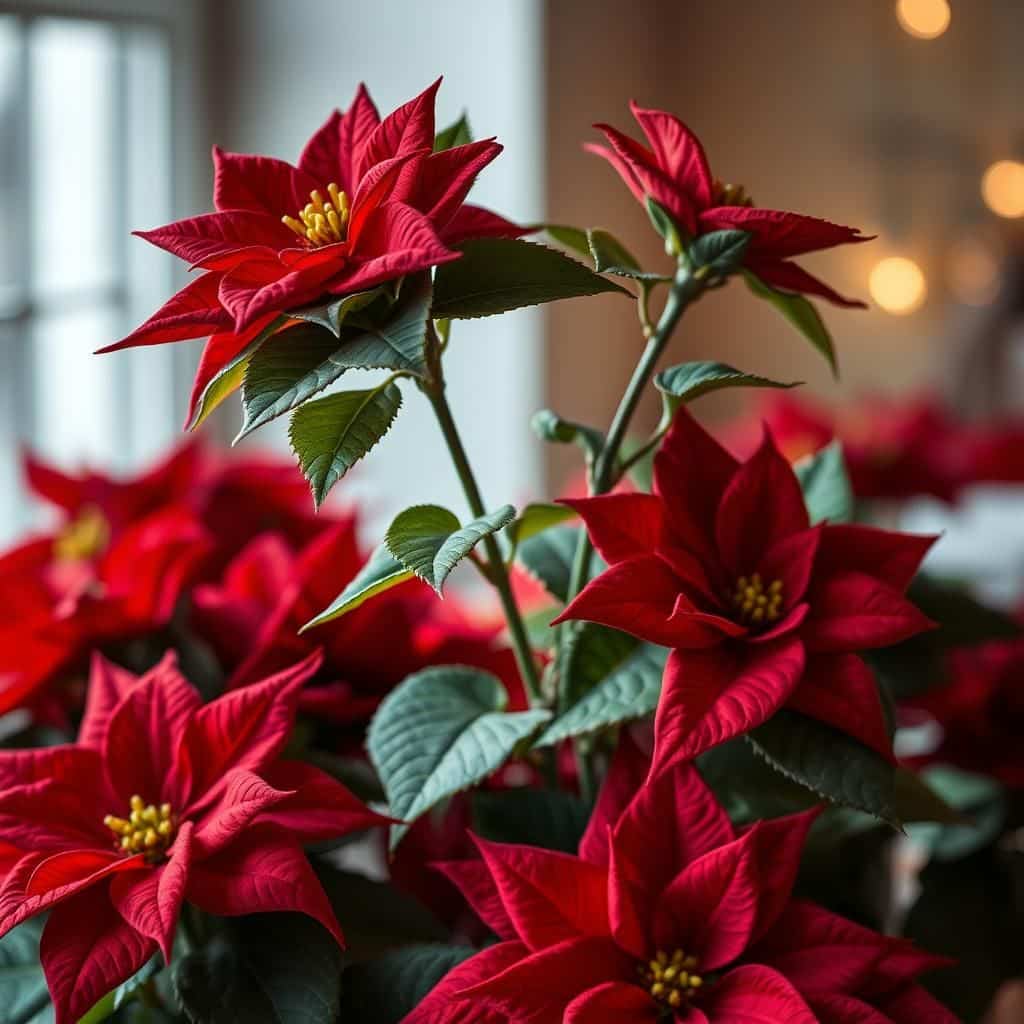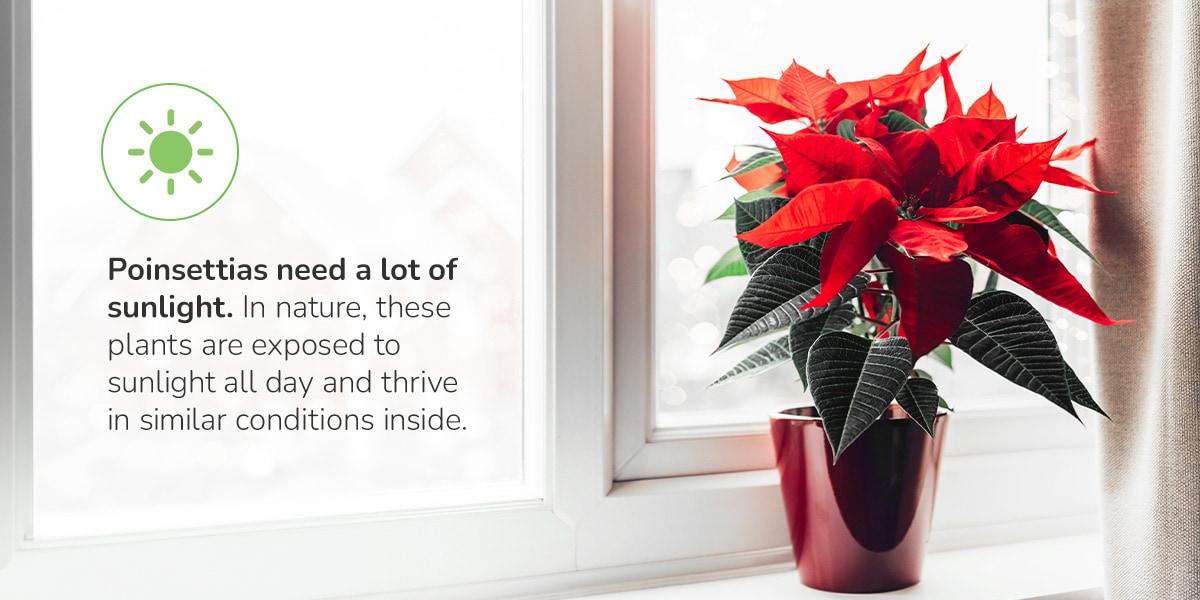Top Care Tips for the Stunning Red Christmas Flower Poinsettia: Enhance Your Holiday Decor

Poinsettias, with their vibrant red bracts and festive allure, have become synonymous with the holiday season. These stunning plants not only enhance your décor but also bring a touch of nature's beauty indoors. However, to keep your poinsettia looking its best throughout the holidays, proper care is essential. In this article, we will explore the top care tips for maintaining this iconic Christmas flower, ensuring it thrives and adds charm to your celebrations. From optimal watering techniques to ideal lighting conditions, discover how to nurture your poinsettia and make it a standout feature in your holiday arrangements.
Poinsettia: The Iconic Red Christmas Flower
The poinsettia, known scientifically as Euphorbia pulcherrima, is one of the most recognizable symbols of the holiday season. Originating from Mexico, this striking plant is celebrated for its vibrant red and green foliage, making it a popular decoration during Christmas. The colorful bracts, which are often mistaken for petals, surround small yellow flowers in the center, creating a festive appearance that brightens homes and public spaces. Poinsettias thrive in warm environments and are sensitive to cold, making them ideal for indoor display during the winter months. Their cultural significance is rooted in tradition, as they are associated with the Christmas story in various legends, symbolizing purity and hope.
History of Poinsettias
The history of the poinsettia dates back to ancient Mexico, where the plant was known as Nochebuena, meaning Christmas Eve. It was utilized by the Aztecs for medicinal and dye purposes. The plant was introduced to the United States by Joel Poinsett, the first U.S. ambassador to Mexico, in the early 19th century. Poinsett recognized the plant's beauty and began propagating it in his greenhouse, leading to the naming of the plant in his honor. Since then, the poinsettia has become a cherished holiday tradition, especially in the U.S., where it is the most popular potted plant sold during the festive season.
Care Tips for Poinsettias
To keep your poinsettia healthy throughout the holiday season, it's essential to provide the right care. These plants prefer bright, indirect sunlight and should be kept in temperatures between 65°F and 75°F. It's crucial not to expose them to drafts or drastic temperature changes. Water your poinsettia when the top inch of soil feels dry, ensuring that excess water drains away to prevent root rot. Additionally, feeding the plant with a balanced liquid fertilizer every few weeks can encourage vibrant foliage and longer-lasting blooms.
Symbolism of the Poinsettia in Christmas
The poinsettia carries rich symbolism within the context of Christmas. According to folklore, a young girl in Mexico, unable to afford a gift for the baby Jesus, was inspired to gather weeds from the roadside. When she presented her humble offering, the weeds miraculously blossomed into vibrant red poinsettias. This story highlights themes of love, giving, and the idea that true beauty comes from the heart. Today, the poinsettia serves not only as a decoration but also as a symbol of Christmas spirit and goodwill.
How to Propagate Poinsettias
Propagating poinsettias can be a rewarding endeavor for plant enthusiasts. The best time to take cuttings is in late spring, once the plant has finished blooming. To propagate, cut healthy stems about 4 to 6 inches long, making the cut just below a leaf node. Remove the leaves from the lower half and dip the cut ends in a rooting hormone to encourage growth. Place the cuttings in a potting mix or water, keeping them in a warm, humid environment until roots develop. With care, you can create new poinsettias to enjoy in future holiday seasons.
Poinsettia Varieties
While the classic red poinsettia is the most popular, there are numerous varieties to explore. Some include 'White Christmas', which features creamy white bracts, and 'Princettia', known for its delicate pink hues. There are also multi-colored varieties such as 'Marble', which combines red and white patterns. Each of these varieties offers a unique aesthetic, allowing individuals to choose a poinsettia that best fits their holiday décor and personal style. The diversity in color and shape showcases the versatility of this beautiful plant.
| Variety | Color | Unique Feature |
|---|---|---|
| Classic Red | Red | Traditional holiday color |
| White Christmas | White | Elegant and pure appearance |
| Princettia | Pink | Soft, delicate look |
| Marble | Red/White | Unique multi-color pattern |
| Jingle Bells | Red with Cream | Festive speckled bracts |
Do poinsettias come back every year?


Poinsettias can indeed come back every year, but they require specific care and conditions to do so. Native to Mexico, these plants have become popular holiday decorations due to their vibrant red and green colors. While often treated as annuals, with proper care, poinsettias can be kept as perennials. The key to getting your poinsettia to bloom year after year involves understanding its life cycle and providing appropriate environmental conditions.
Understanding Poinsettia Life Cycle
The life cycle of a poinsettia typically includes four main stages: growth, dormancy, the flowering phase, and post-flowering maintenance.
- Growth Stage: After winter, a poinsettia needs rich soil and plenty of sunlight to thrive.
- Dormancy: Post-flowering, plants enter a rest period which is crucial for their health.
- Flowering Phase: With proper light conditions starting in late summer, they can produce spectacular blooms again in winter.
Ideal Conditions for Reblooming
To encourage your poinsettia to come back each year, you must create the right conditions for growth.
- Watering: Maintain a consistent watering schedule; allow the top inch of soil to dry out before watering again.
- Light Requirements: Place the plant in a bright location but avoid direct sunlight; it thrives in indirect light.
- Temperature: Keep your poinsettia in a warm environment, ideally between 60°F and 70°F (15°C and 21°C).
Pruning and Maintenance
Proper pruning and maintenance of your poinsettia can significantly affect its ability to return each year.
- Pruning: In spring, cut back the stems to about 4-6 inches above the soil line to promote bushier growth.
- Fertilizing: Use a balanced fertilizer every 4-6 weeks during the growing season to provide nutrients.
- Potting: If needed, repot your poinsettia in fresh potting soil to encourage robust growth.
Seasonal Care Practices
Following seasonal care practices can help you maintain your poinsettia for years to come.
- Post-Holiday Care: After the holiday season, reduce watering as the plant enters dormancy.
- Reintroduction of Light: In late summer, begin providing longer periods of bright light to encourage blooming.
- Monitoring Pests: Keep an eye out for pests and diseases that could affect the plant’s health and reblooming potential.
Common Misconceptions
Many misconceptions exist surrounding the ability of poinsettias to return each year.
- Annual vs. Perennial: They are often treated as annuals but can live longer with proper care.
- Winter Care: Some believe they cannot survive winter; instead, they need a rest period.
- Difficulty: While they can be challenging, proper knowledge makes them manageable as perennial plants.
Do red poinsettias need sun?

Red poinsettias, known scientifically as Euphorbia pulcherrima, do require sunlight, but their needs can be nuanced. While they thrive in bright, indirect light, direct sunlight can be detrimental to them. Understanding their sunlight requirements is crucial for maintaining the health and vibrancy of these festive plants.
See also:
Understanding Poinsettia Light Requirements
The light requirements of red poinsettias are essential for their growth and overall well-being. They flourish best in environments that provide bright, indirect sunlight. Direct exposure to the sun can cause the leaves to scorch, leading to unsightly brown patches and leaf drop. It's important to find a balance that allows the plant to receive adequate light without damaging its foliage.
- Poinsettias prefer around 6 hours of bright, indirect light each day.
- Direct sunlight exposure for more than a few hours can lead to leaf scorch and stress.
- They can adapt to lower light conditions, but this may result in stunted growth and reduced bract color.
Optimal Locations for Your Poinsettia
Finding the right location for your red poinsettia is key to its health. Ideal spots include near east or west-facing windows where the plant can receive ample light without being overwhelmed by harsh midday sun. This setting provides the necessary warmth and light intensity for photosynthesis.
- East-facing windows offer gentle morning light that is mild and beneficial.
- West-facing windows provide more intense light during the afternoon but should be filtered.
- Avoid placing them near drafts or excessively hot areas, like heaters or air conditioning vents.
Effects of Insufficient Sunlight
Insufficient sunlight can lead to several issues for red poinsettias. When they do not receive adequate light, their growth may become leggy, as they stretch towards the light source. Moreover, the vibrant color of their bracts may fade, diminishing the plant's overall attractiveness.
- Plants may exhibit decreased growth rates and become weak or spindly.
- Bract color can become dull, affecting its decorative appeal.
- Low light can also lead to increased vulnerability to pests and diseases.
Seasonal Sunlight Changes
As the seasons change, so does the sunlight intensity and duration. During the winter months, poinsettias may require additional care as sunlight becomes scarce. It's essential to adjust their location or the duration of light exposure accordingly to meet their needs throughout the year.
- Consider using grow lights during the shortest days to supplement natural light.
- Monitor changes in sunlight exposure with the changing seasons, especially in winter.
- Adjust watering and fertilization practices based on light availability to prevent stress on the plant.
Best Practices for Poinsettia Care
Proper care goes beyond just managing light; it encompasses a holistic approach to nurturing your red poinsettia. Ensuring a balance of light, water, and nutrients will keep your plant healthy and thriving.
- Maintain consistent watering, allowing the top inch of soil to dry between sessions.
- Fertilize with a balanced houseplant fertilizer during the growing season for optimal nutrition.
- Regularly check for pests and maintain overall cleanliness by wiping leaves to promote photosynthesis.
Questions from Our Readers
What is the significance of the red Christmas flower poinsettia?
The red Christmas flower poinsettia is often associated with Christmas and symbolizes joy and good cheer. This vibrant plant has a rich history, especially in Mexican culture, where it is known as Nochebuena and is associated with holiday traditions.
How should I care for my poinsettia during the holidays?
To care for your poinsettia during the holidays, ensure it receives bright, indirect light and maintain a consistent watering schedule, allowing the soil to dry slightly between waterings. It’s important to keep it away from drafts and cold temperatures to maintain its health.
Are poinsettias toxic to pets?
While poinsettias often get a bad reputation for being toxic, they are actually considered to be only mildly toxic. If ingested by pets, it may cause mild irritation to the mouth and stomach, but serious harm is quite rare if consumed in small amounts.
See also:
Can I keep my poinsettia plant after the holiday season?
Yes, you can keep your poinsettia plant after the holiday season! With proper care, including light and watering adjustments, it can thrive and even bloom again in the next holiday season, making it a worthwhile addition to your home all year round.

If you want to read more articles like Top Care Tips for the Stunning Red Christmas Flower Poinsettia: Enhance Your Holiday Decor, we recommend you check out our Pots category.
Leave a Reply
Related Articles